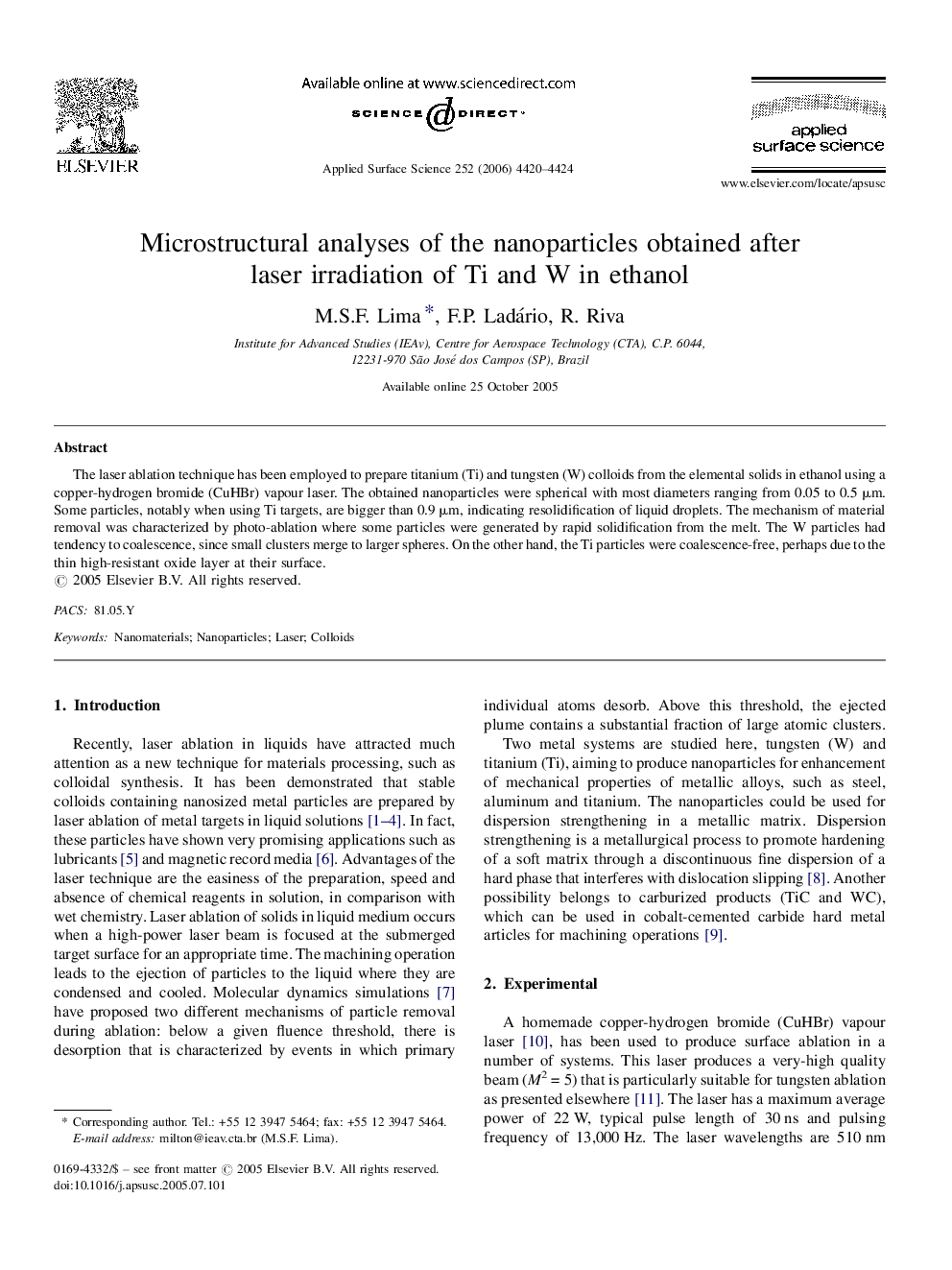| Article ID | Journal | Published Year | Pages | File Type |
|---|---|---|---|---|
| 5369213 | Applied Surface Science | 2006 | 5 Pages |
The laser ablation technique has been employed to prepare titanium (Ti) and tungsten (W) colloids from the elemental solids in ethanol using a copper-hydrogen bromide (CuHBr) vapour laser. The obtained nanoparticles were spherical with most diameters ranging from 0.05 to 0.5 μm. Some particles, notably when using Ti targets, are bigger than 0.9 μm, indicating resolidification of liquid droplets. The mechanism of material removal was characterized by photo-ablation where some particles were generated by rapid solidification from the melt. The W particles had tendency to coalescence, since small clusters merge to larger spheres. On the other hand, the Ti particles were coalescence-free, perhaps due to the thin high-resistant oxide layer at their surface.
